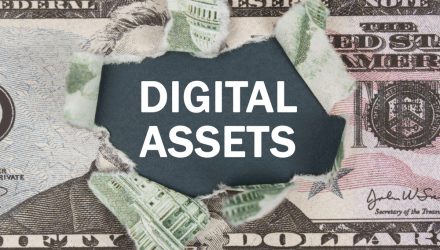Bitcoin has been around since 2009, but that’s young compared to most traditional asset classes, and since other cryptocurrencies are younger than bitcoin, it’s not a stretch to say this asset class is still in its formative years.
With that, there are bound to be bumps and criticisms. Additionally, as seasoned crypto investors know, there will also be dubious contenders to the thrones occupied by the likes of bitcoin and ethereum — the top two digital assets, as measured by market capitalization.
Today, there are nearly 9,000 cryptocurrencies on the market, according to CoinMarketCap.com. That’s a massive number, which ensures that there will be some members of the group that are to be avoided. However, there are credible opportunities in the space beyond bitcoin.
“The value of newer digital assets – such as Ethereum, Tron and Solana – is linked to their rapid growth as platforms for smart contracts. Broadly speaking, digital assets offer diversification from traditional asset classes, as their prices tend to move independently. However, digital asset prices are volatile, subject to rapid price swings. Due to this and the other risks they are linked to, they should only form a limited part of an investor’s overall portfolio,” according to VanEck research.
There’s no denying that bitcoin, owing in large part to age and size, is the de facto first choice for many new investors in the digital assets space. However, this arena is comparable to traditional asset classes with respect to the importance of diversification.
For example, smart equity investors don’t overload a portfolio with a single sector or market cap segment. Likewise, astute bond investors don’t feast on a single duration range or just investment-grade debt.
“However, it is often wise to diversify or spread your bets. While Bitcoin was the first digital asset, newer digital assets offer different use cases. Second or third-generation digital assets like Ethereum and Solana are backed by more advanced technology, which may boost demand for network capacity and their tokens. It is difficult to predict which will be the dominant cryptocurrencies in 20 years. For that reason, it may be wise to invest in a basket of digital assets,” added VanEck.
Fortunately, there are avenues for investors to gain exposure to multiple digital assets, including index funds. Additionally, some exchange traded funds provide allocations to broad cross sections of equities with deep ties to the crypto industry.
For more news, information, and analysis, visit the Alternatives Channel.
The opinions and forecasts expressed herein are solely those of Tom Lydon, and may not actually come to pass. Information on this site should not be used or construed as an offer to sell, a solicitation of an offer to buy, or a recommendation for any product.

